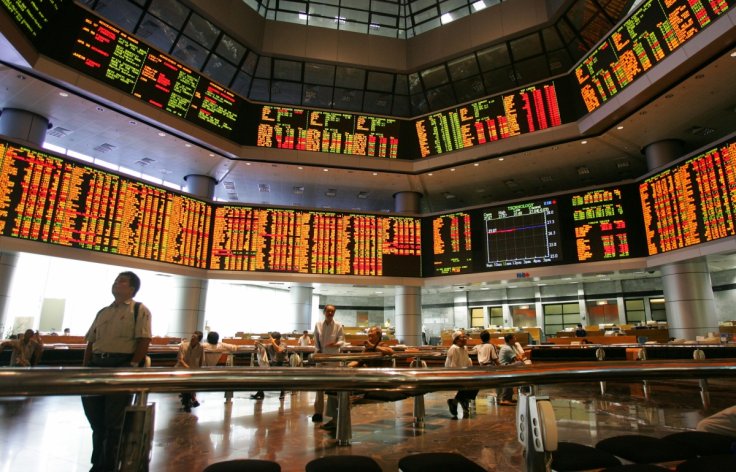
Asian share markets jumped on Wednesday as investors dared to hope the Federal Reserve would follow the lead of the European Central Bank and open the door to future rate cuts at its policy meeting later in the day.
Indeed, ECB President Mario Draghi's shock turnaround on easing fueled talk of a worldwide wave of central bank stimulus, firing up stocks, bonds and commodities.
Adding to the cheer was news U.S. President Donald Trump would meet with Chinese President Xi Jinping at the G20 summit later this month, and that trade talks would restart after a recent lull.
MSCI's broadest index of Asia-Pacific shares outside Japan climbed 0.6% in early trade, adding to a 1% gain the day before.
Japan's Nikkei rose 1.5% and South Korea 1.1%. E-Mini futures for the S&P 500 were a fraction firmer after a upbeat Wall Street session.
The Dow ended Tuesday with gains of 1.35%, while the S&P 500 rose 0.97% and the Nasdaq 1.39%. The S&P 500 has gained 6% so far this month to be 1% from the all-time high hit in early May.
All eyes are now upon the Fed which is scheduled to release a statement at 1800 GMT on Wednesday, followed by a press conference by Chairman Jerome Powell shortly after.
Yet the heightened anticipation also creates risks the Fed might fail to meet investors' high expectations.
"Market expectations for a dovish shift are nearly universal, the only question seems to be the degree," said Blake Gwinn, head of front-end rates at NatWest Markets.
Futures are almost fully priced for a quarter-point easing in July and imply more than 60 basis points of cuts by Christmas.
"Markets will be looking for validation of this pricing," he added. "We think this represents a fairly high bar for the Fed to deliver a dovish surprise."
SUB-ZERO YIELDS
BofA Merrill Lynch's latest fund manager survey spoke volumes about the sea change in sentiment.
Allocation to global equities dropped 32 points to a net 21% underweight, the lowest since March 2009, while the bond allocation hit the highest since September 2011.
Interest rate expectations collapsed, while concerns about a trade war soared to be the top risk for investors, ahead of monetary policy impotence, U.S. politics and a slower China.
The shift was clear in bond markets where German yields hit record lows deep in negative territory, while Japanese yields sank to the lowest since august 2016 at -0.145%.
Yields on the U.S. 10-year note reached the lowest since September 2017 at 2.016%, a world away from the 3.25% top touched in November last year.
The fallout in currencies was significantly less, in large part because it was hard for one to gain when all the major central banks were under pressure to ease.
The euro did pull back a bit after Draghi's comments, but at $1.1198 was still well within the recent trading range of $1.1106-$1.1347.
The dollar remained sidelined against the yen at 108.53, and a shade firmer on a basket of currencies at 97.628.
In commodity markets, the rate-cut buzz kept gold near 14-month highs at $1,346.62 per ounce.
Michael Hsueh, an analyst at Deutsche, noted the decisively dovish shift in central bank expectations was bullish for gold.
"This provides the desired backdrop - one in which investors are less likely to be concerned about the opportunity cost of holding a non-yielding asset, particularly versus the increasing stock of negative-yielding debt," he said.
Reflation trades also supported oil prices, as did hopes for a thawing in the Sino-U.S. trade dispute.
Brent crude futures bounced 40 cents to $62.54, while U.S. crude firmed 45 cents at $54.35 a barrel.








